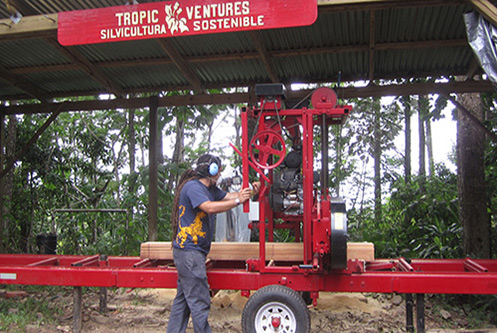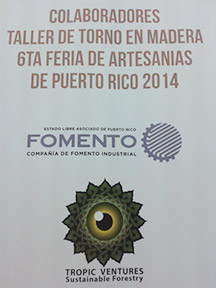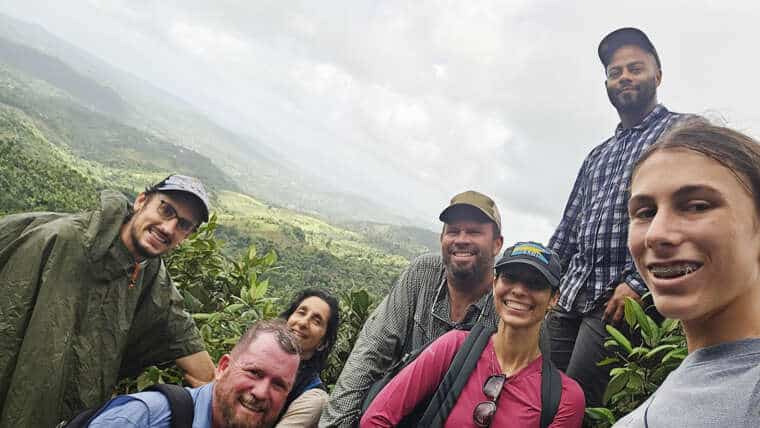2013 – 2015 COOPERATIVE PROJECT BETWEEN TROPIC VENTURES RESEARCH EDUCATION FOUNDATION, US PARTNERS FOR FISH WILDLIFE AND THE EARTHWATCH INSTITUTE.
This program has been formulated to protect endangered flora and fauna by planting endangered endemic tree species, and working on habitat enhancement in subtropical wet forest. The location and the quality of the habitat of the 930-acre forest property of Las Casas de la Selva is ideal for the establishment of projects toward the recovery of various endangered endemic tree species. The property’s north-eastern border adjoins the Carite State Forest which contains another 6,660 acres of subtropical wet mountain forest land.
Tropic Ventures Research & Education Foundation are collaborating with US Fish and Wildlife Service (FWS) to develop habitat enhancement and restoration projects that benefit endangered endemic species of Puerto Rico. The animals include the Puerto Rican boa (Epicrates inornatus), broad-winged hawk (Buteo platypterus brunnescens), Puerto Rican sharp-shinned hawk (Accipiter striatus venator), the Guajon coqui frog (Eleutherodactylus cooki), and Puerto Rican plain pigeon (Columba inornata wetmorei).
Most of these species have been identified on this land, which makes it eminently suitable for their long-term habitat protection & enhancement. The area also provides habitat for several listed trees that have been identified within this geographical area (Eugenia haematocarpa and Callicarpa ampla). The area also harbors habitat for two Candidate Species; the elfin-woods warbler (Dendroica angelae) and the vine/shrub Gonocalyx concolor. The proposed project will also focus on the establishment of two experimental populations of the federally listed tree Styrax portoricensis. Furthermore, the area to be enhanced is part of the Rio Grande de Patillas upper watershed, which serves a large regional population with potable water, and will benefit the water quality of this river by reducing soil erosion.
As part of this project, Tropic Ventures Research and Education Foundation agree to maintain and protect the specific areas to be enhanced or under restoration practices for a period of at least 10 years. The areas for habitat enhancement will not interfere with other areas of the property which have been planted with forest enrichment trees, and is already in a program of sustainable management including selective harvesting of timber trees. Las Casas de la Selva is certified as Stewardship Forest and under the auspices of the Puerto Rican Department of Natural Resources (DNR) and the International Institute of Tropical Forestry (IITF) has an approved Stewardship Management Plan. Tropic Ventures Research & Education Foundation has a contract with Tropic Ventures (the managing entity) to conduct scientific studies and educational research work on the entirety of the land for the next 50 years.
Earthwatch volunteer collaboration
Initially Earthwatch volunteers will be engaged in the process of site selection, site mapping, tagging and planting, measuring the saplings, and data collection. A biologist from FWS may accompany us on some these expeditions to assist in the process. See below for long-term monitoring process. All tree work is dependent on weather and care will be taken on steep slopes as always. There will always be nursery work, which may include pruning, care and maintenance of young seedlings, and of endangered tree species.
PROPOSAL
1. ENDANGERED SPECIES: Establishment of new populations of Styrax portoricensis. Establish at least two populations composed of about 50 individuals each in approximately 2 acres. Expected survival is 75% after the 2nd year of planting. Styrax portoricensis, locally known as palo de jazmin, is a species of flowering plant in the family Styracaceae. It is one of the rarest endemic trees of Puerto Rico and is found only in the northeastern Luquillo Mountains (Sierra de Luquillo) and the north-central Cayey mountains (Sierra de Cayey).
2. HABITAT ENHANCEMENT: Establishment of a shade nursery for caring and sheltering of saplings of threatened endemic species until planting.
3. LONG TERM MONITORING: The aim of this effort is to monitor the initial survival, growth rate, and success of the reintroduced material to ensure the best contribution to the recovery of the species.
4. REPORTS: Annually
5. OUTREACH: We will develop an outreach project to promote the recovery efforts and to educate the local community and visitors. This program will include fliers, brochures, and boards and signs along trails etc.
THE FOREST PRODUCTS ASSESSMENT PROJECT
This project has enabled Andrés Rúa to visit with sawmill owners over the island, interview dozens of artisans who work with forest products, as well as large & small scale wood & product dealers. The project aims to investigate use of forest products in Puerto Rico; where wood is coming from, what types of wood, who are the buyers, and what other forest products are in demand and use?
A symposium in April 2012 brought together over eighty people, ranging from foresters, arborists, woodworkers, DRNA staff, artisans, architects, professors, and UPR students, the symposium was hugely informative. The event was dedicated toCarlos Domínguez Cristóbal, author of “Panorama historico forestal de Puerto Rico”, and to recently retired forester Dr. Peter L. Weaver from IITF.
The Forest Products Assessment project continued with an in-the-field event in August 2012 led by Andrés Rúa. A pine tree was felled by arborist Andre Sanfiorenzo, hauled out by tractor, and milled. The event was to bring together and give those who shown an interest at the last Symposium the opportunity to actually partake in a timber project. Andrés showed the mill at work and several people had the chance to operate it. After a gourmet lunch, the afternoon continued in el teatro where lively and heated discussions dealt with the next steps to creating an intelligent future for timber production and forest products in Puerto Rico.
March 2013 saw the beginning of the second phase of the Forest Products Assessment, with a meeting at the International Institute of Tropical Forestry, (Images here) and then in in May 2013 at the University of Cayey, (Images here). More details on www.nuestramadera.org
CADA, Council for the Development of Agro-forestry, founded by Andrés Rúa and 3t Vakil, May 2013, was born from forestry discussions, which began with Frank H. Wadsworth in private meetings in 2008. The open membership includes individuals from universities and the private sector, members of Government agencies, and many other institutions, all brought together with an over-arching interest in the development of policies pertaining to the sustainable and intelligent use of all Puerto Rico’s valuable & unique natural resources.
Dec 2014 Symposium and Wood Expo at The International Institute of Tropical Forestry.
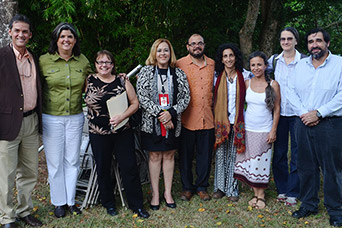
L-R: Luis Soto, (Land Authority Director) Carmen Guerrero, (Secretary of DNR), Connie Carpenter, Magaly Figueroa, (USDA State & Private Forestry), Andrés Rúa, 3t Vakil, (Tropic Ventures) Magha Garcia, (Director Pachamama Organic Farm), Sheila Ward, (Mahogany for the Future), Edgardo Gonzalez (Landscape Conservation Center). 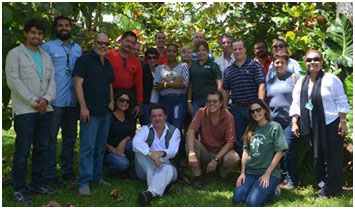
Aug 28-29: Andrés attends two days of a 5-day DNR conference in Adjuntas, with professors from CATIE (Centro Agronómico Tropical de Investigación Enseñanza)
Nov 2014 Artisan Fair – Convention Center, San Juan.
April 2014 Talk at School of Fine Art & Industrial Design

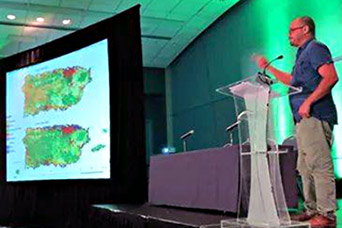
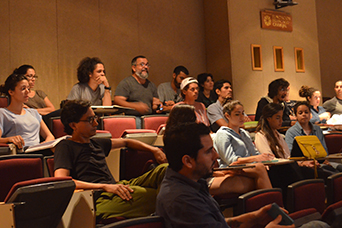
Luthiers of PR held an event to see our collection of Puerto Rican woods and to discuss a collaborative future. 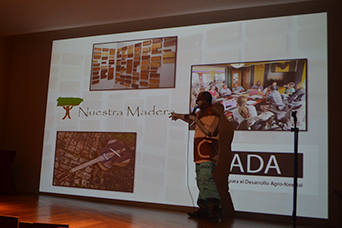
Nov 2014 DNR Symposium: ‘Landscape Management of PR’ An interdisciplinary exchange for conservation & sustainable development. 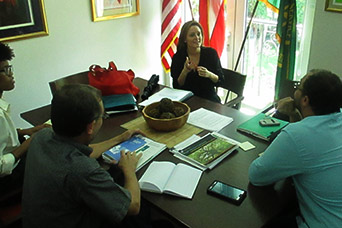
26th September 2014: meeting at IITF 
12th June 2014: Meeting with Secretary of DNR, Carmen Guerrero (far left). 
CADA meeting 6th May 2014 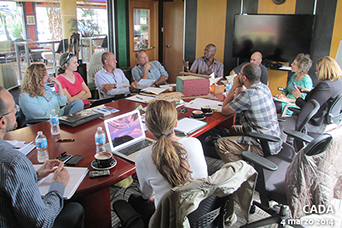
CADA meeting 4th March 2014


